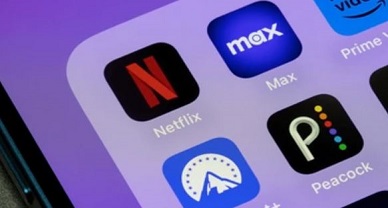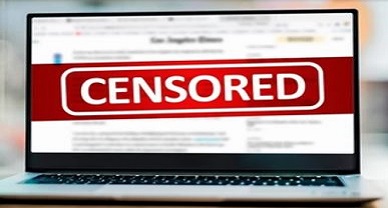From IT Rules to Broadcasting Bill: A Critical Analysis of India’s Evolving OTT Regulatory Framework
The OTT Boom with Subsequent Challenges
India is both a secular and democratic country that upholds the Constitution’s guarantee of freedom of speech and expression. The BIG Flix was introduced as the 1st dependent Indian OTT in 2008 by Reliance Entertainment which set the chain of OTT and it was further continued by Digivive in 2010 when they launched an OTT mobile app to stream the IPL matches. The tectonic shift in this industry was significantly witnessed when individuals started shifting from Televisions and Cinemas to these new digital platforms. COVID-19 also played a huge impact in increasing the screentime of the users, making OTT a new level of platform rather than just an alternative. The main problem that started to arise after the growth was the violations of various regulations.
Once Former Judge and Adv. Bharat Chugh while writing a poem in the Judicial Academy of Delhi quoted:
“How you write it is your discretion. Nothing in the law that bars you from invoking a couplet or invoking a historical context or invoking philosophy or invoking literature. You can do all of that as long as you are making those points[1],”
The main problem with OTT platforms is infringing the line of law while making the content. As mentioned at the start India is both a secular and democratic country, hence a country with such liberty comes a great wall of social differences and these differences are the main essence of a dispute.
Assessing the Sufficiency of the IT Rules 2021 in Regulating OTT Platforms
The evolution of the current IT rules was the result of various interpretations and callings of the Indian courts. It all started on 20th December 2020, when both the ministries, i.e. I&B and IT filed a petition to consolidate all the various pending cases and subsequently transfer them to the Apex Court of India. After this, the Supreme Court in Justice for Rights Foundation v. Union of India[2] ruled that the IT act is sufficient in itself to regulate online content and there’s no requirement of any separate/additional guidelines. Based on this set precedent the Delhi High Court quashed a petition by Adv. Bhalla demanded to censor dialogues defaming the former PM Rajiv Gandhi. However, the opinion of the court was completely changed when Mr. Jha and others filled a PIL where the SC urged the government to provide clarity in the matters related to OTT.[3]
Wherein Justice AS Bopanna and V Ramasubramanian said:
“This is an important issue. It is not adversarial at all. The government should tell us what it is doing about the OTTs. What is it you are doing, legislation or what?”[4]
What are these IT rules, 2021?
These rules nowhere explicitly mention OTT. However, it includes definitions like – “online curated content”, “digital media and “publisher of online curated content” which can include OTT services. The rules introduce a three-tier regulatory system:
- Level 1 – Self-Regulation by OTT Platforms: Each platform must appoint a grievance officer in India, whose contact information should be prominently displayed. The appointed officer is responsible for addressing user complaints within 15 days.
- Level 2 – Self-Regulatory Industry Bodies: OTT platforms are required to join industry bodies for self-regulation. These bodies, like the Digital Publisher Content Grievances Council (DPCGC) and the Digital Media Content Regulatory Council (DMCRC), are made up of publishers or their associations, including global platforms like Netflix and Amazon Prime Video. These self-regulatory bodies can enforce rules, as seen in a case where the DPCGC took action against the platform ULLU.
- Level 3 – Government Oversight Mechanism: The MIB has established an Inter-Departmental Committee, serving as an appellate body for grievances not resolved at the first two levels.[5]
These rules were although a modern approach but it was insufficient to accommodate the diverse culture of India. There were many instances in the various High courts and Supreme Court which concluded that these rules lacked in many aspects.
One such instance occurred in January 2022, when the release of the film Why I Killed Gandhi was banned as the petitioner argued that the image of Gandhi was harmed and on the contrary, Godse was shown as a hero. The court called for stricter provisions governing OTT, as the existing ones were insufficient in such a context.[6]

Another such instance is over the series Tandav on Amazon Prime, the series was accused of offending the religious sentiments of the Hindu gods. Due to this many FIRs were logged and people demanded strict actions against the creators. The makers had to remove some of the scenes from the series as the Supreme Court also emphasized the importance of reviewing the content before it is made public. Hence this shows that even after the existence of the grievance redressal mechanism under the given IT Rules, it lacks the power to stop such content before it goes live.[7]
Hence it can be concluded that IT Rules, 2021 was an important step in regulating OTT platforms but it has significantly failed to cover the full range of issues arising in the digital world. These rules fail to provide a protective wall to regulate sensitive topics such as religious content, piracy issues, IP Protection, etc. Therefore, the current scenario demands a clearer legal framework that can balance the needs of the present with the complex digital era.
The Clash Between MIB and MEITY: Regulatory Ambiguity and the Withdrawal of the New Broadcasting Bill 2024
The main clash between both ministries is about whether the OTT falls under the circle of IT or Broadcasting. This uncertainty leads to a lot of ambiguity for the citizens and creators on various aspects mainly regulatory and compliance.
Current Situation:
- MEITY’s Role: Since 2015 MEITY has been working to regulate the OTT platforms. They introduced the Information Technology Rules in 2021 (IT Rules 2021), which primarily focused on regulating OTT as digital media platforms. These rules established a three-tier grievance system, allowing content to be classified and complaints to be addressed at various levels.
- MIB’s Position: MIB, on the other hand, sees OTTs as part of the broadcasting sector. To bring OTTs under its purview, MIB proposed the Broadcasting Bill in 2023, which seeks to replace India’s existing 1995 broadcasting law and classify OTT content as broadcasting.
- 2024 Draft Broadcasting Bill: MIB expanded its approach in 2024 by introducing a new draft bill that would extend broadcasting regulations to social media. This draft classifies digital posts as broadcasting and includes digital content creators under the term “Digital News Broadcasters.” The draft was shared only with select stakeholders, sparking backlash for its lack of transparency. It was ultimately withdrawn for broader consultation on the 2023 draft bill.
Moving Towards Clear and Unified OTT Regulations: A Way Forward
The journey from the IT Rules,2021 to the recent draft of the Broadcasting Bill,2024 depicts a critical evolving approach resulting in deep ambiguity. Both the MEITY AND MIB claim their own jurisdiction over OTT regulation leaving the stakeholders uncertain about the regulatory compliance. The recent withdrawal stresses the need for a more balanced and unified regulation with social sensitivity and more clarity. The way forward should be focused on combining the strengths of MEITY’s digital first approach and the MIB’s broadcasting centric viewpoint. Moreover, a unified policy should be developed through consulting openly with all the stakeholders in the industry, experts in the legal field, and representatives of various cultures not only a handful. This approach would help to improve the regulatory framework while safeguarding creative freedom.
Author: Dhruv Selot, in case of any queries please contact/write back to us at support@ipandlegalfilings.com or IP & Legal Filing
[1] Bharat Chugh, Poetic Justice: When judges referred to literary works and famous quotes in their verdicts, (Nov. 4, 2021), https://www.barandbench.com/columns/poetic-justice-when-judges-referred-to-literary-works-and-famous-quotes-in-their-verdicts.
[2] Justice for Rights Foundation v. Union of India, WP (C) 11164/2018
[3] Aarya Kumar Jha, IT Rules 2021: Regulations on Ott Platforms, 1.3 JCLJ 131 (2021).
[4] https://www.hindustantimes.com/india-news/spell-out-regulatory-regime-sc-tells-govt-on-ott-norms-101613503941290.html.
[5] G&W Legal, OTT Streaming in India – need for ‘over-the-top’ regulation of the industry?, Lexology (June 28, 2024), https://www.lexology.com/library/detail.aspx?g=b8c16580-da06-441e-970c-8ced1826508d.
[6] Mahatma Gandhi, From taboo topics to IPR: How OTT platforms can avoid and manage potential legal pitfalls, (May 5, 2023), https://www.barandbench.com/columns/from-taboo-topics-to-ipr-how-ott-platforms-can-avoid-and-manage-potential-legal-pitfalls.
[7] Tandav Web Series, How OTT platforms can avoid and manage potential legal pitfalls, (May 5, 2023), https://www.barandbench.com/columns/from-taboo-topics-to-ipr-how-ott-platforms-can-avoid-and-manage-potential-legal-pitfalls.

